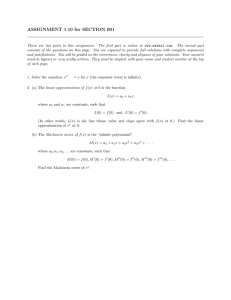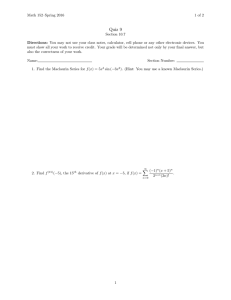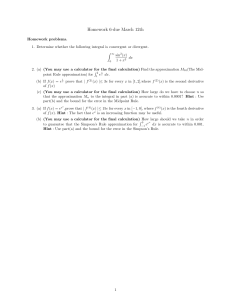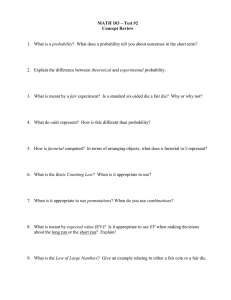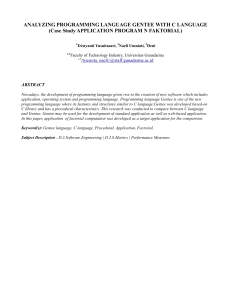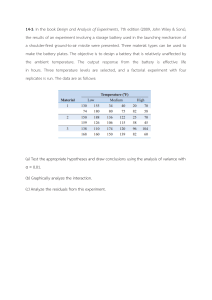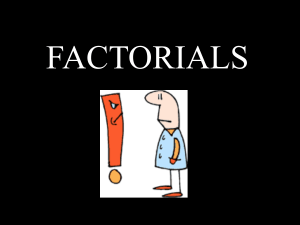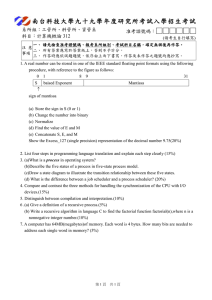1 MATH 348 - Homework II Some cause happiness wherever they go;
advertisement
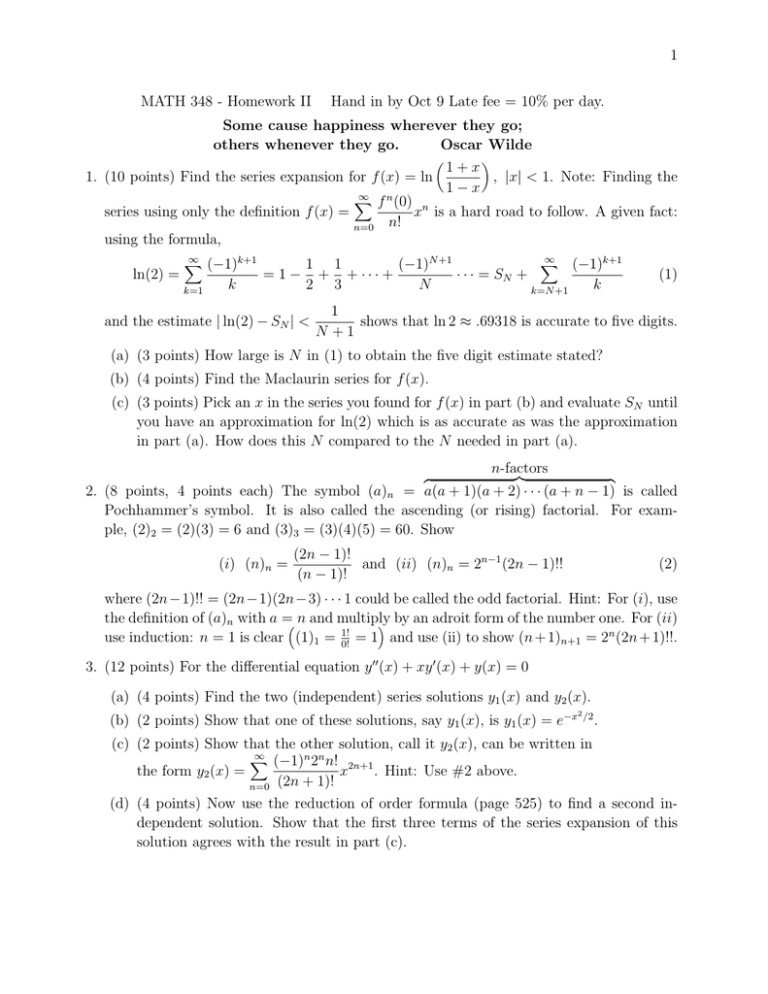
1
MATH 348 - Homework II
Hand in by Oct 9 Late fee = 10% per day.
Some cause happiness wherever they go;
others whenever they go.
Oscar Wilde
1+x
1. (10 points) Find the series expansion for f (x) = ln
, |x| < 1. Note: Finding the
1−x
∞
X f n (0)
series using only the definition f (x) =
xn is a hard road to follow. A given fact:
n=0 n!
using the formula,
ln(2) =
∞
X
∞
X
(−1)k+1
1 1
(−1)N +1
(−1)k+1
= 1 − + + ··· +
· · · = SN +
k
2 3
N
k
k=1
k=N +1
and the estimate | ln(2) − SN | <
(1)
1
shows that ln 2 ≈ .69318 is accurate to five digits.
N +1
(a) (3 points) How large is N in (1) to obtain the five digit estimate stated?
(b) (4 points) Find the Maclaurin series for f (x).
(c) (3 points) Pick an x in the series you found for f (x) in part (b) and evaluate SN until
you have an approximation for ln(2) which is as accurate as was the approximation
in part (a). How does this N compared to the N needed in part (a).
n-factors
z
}|
{
2. (8 points, 4 points each) The symbol (a)n = a(a + 1)(a + 2) · · · (a + n − 1) is called
Pochhammer’s symbol. It is also called the ascending (or rising) factorial. For example, (2)2 = (2)(3) = 6 and (3)3 = (3)(4)(5) = 60. Show
(i) (n)n =
(2n − 1)!
and (ii) (n)n = 2n−1 (2n − 1)!!
(n − 1)!
(2)
where (2n−1)!! = (2n−1)(2n−3) · · · 1 could be called the odd factorial. Hint: For (i), use
the definition of (a)n with a = n and multiply
by an adroit form of the number one. For (ii)
1!
use induction: n = 1 is clear (1)1 = 0!
= 1 and use (ii) to show (n + 1)n+1 = 2n (2n + 1)!!.
3. (12 points) For the differential equation y 00 (x) + xy 0 (x) + y(x) = 0
(a) (4 points) Find the two (independent) series solutions y1 (x) and y2 (x).
(b) (2 points) Show that one of these solutions, say y1 (x), is y1 (x) = e−x
2 /2
.
(c) (2 points) Show that the other solution, call it y2 (x), can be written in
∞
X
(−1)n 2n n! 2n+1
x
. Hint: Use #2 above.
the form y2 (x) =
n=0 (2n + 1)!
(d) (4 points) Now use the reduction of order formula (page 525) to find a second independent solution. Show that the first three terms of the series expansion of this
solution agrees with the result in part (c).
